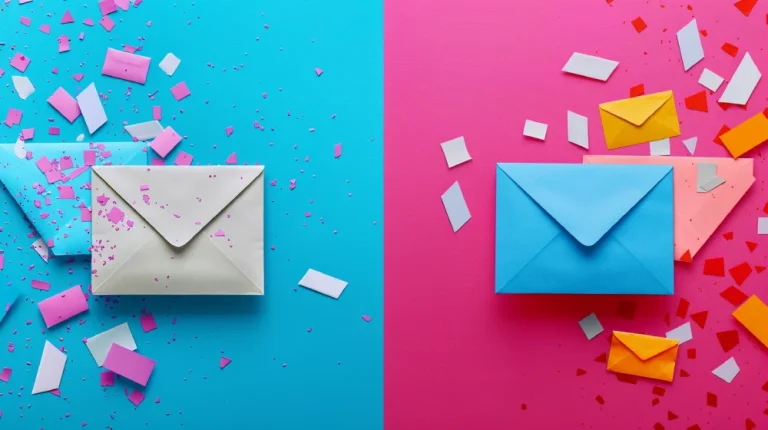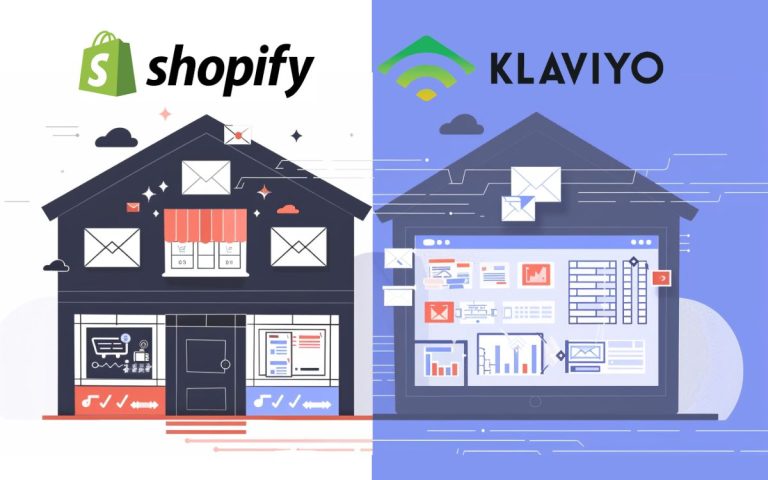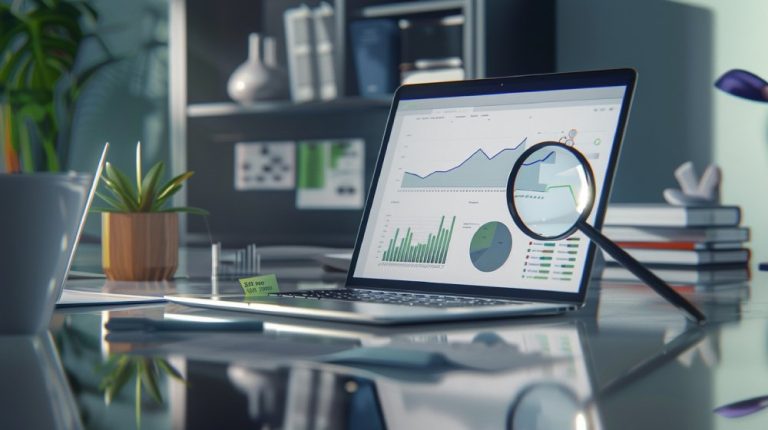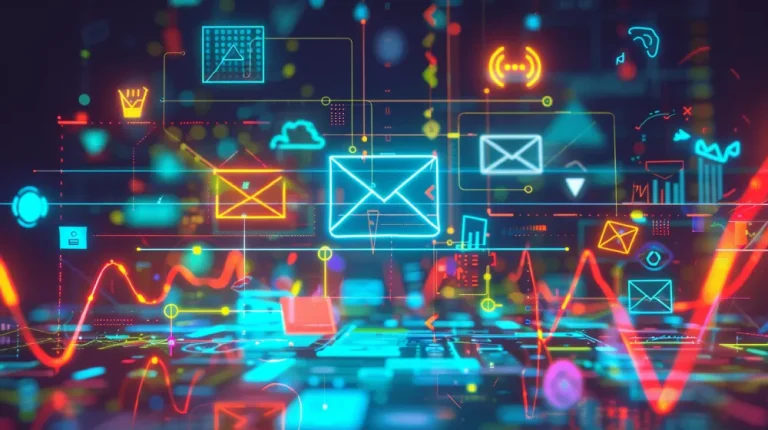SMS Marketing Vs Email Marketing
You’ve got two powerful tools at your disposal: SMS marketing, with a 98% open rate, and email marketing, reaching 4 billion users. SMS guarantees instant engagement with 90% of texts read within 3 minutes, making it perfect for urgent updates.
Email marketing offers detailed analytics and longer-form content, valuable for newsletters and in-depth promotions. Strategically combining both can boost your campaign’s effectiveness, optimizing immediate engagement and long-term customer relationships. Wondering how to balance these approaches for maximum impact? Here’s what you need to know.
Key Takeaways
- SMS marketing boasts a 98% open rate, significantly higher than email’s 20%.
- Email marketing provides in-depth analytics for refined long-term strategies.
- SMS delivers instant, time-sensitive content with a 90-second average response time.
- Email marketing can include detailed content suitable for newsletters and promotions.
- Combining SMS and email marketing enhances overall customer engagement and campaign effectiveness.
Reach and Engagement
When comparing reach and engagement, email marketing taps into a vast audience with its 4 billion users, while SMS marketing excels with an impressive 98% open rate.
In the SMS marketing vs email marketing debate, both channels offer unique advantages. Your email marketing strategy can capitalize on the extensive reach, allowing you to send detailed and visually appealing email marketing campaigns. However, the average open rate for emails lags behind at around 20%, partly due to oversaturation in inboxes.
On the other hand, SMS marketing guarantees that nearly all customers via text messages see your content, thanks to the high average open rate. SMS messages are typically read within minutes, maximizing engagement. However, there are disadvantages of SMS, including character limits and the potential for perceived intrusiveness.
Despite this, a well-balanced strategy blending SMS and email marketing can be highly effective.
Communication Efficiency
When evaluating communication efficiency, you’ll find SMS marketing excels with its 98% open rate and instant delivery, making it perfect for urgent updates.
Email marketing, on the other hand, offers robust performance tracking tools that let you segment your audience for highly targeted campaigns.
While SMS provides quick, real-time interactions, email’s detailed analytics help you refine your strategies for long-term success.
Real-Time Message Delivery
SMS marketing achieves unmatched communication efficiency with its 98% open rate and instant message delivery, typically within 90 seconds. When you need a reliable communication channel for real-time interactions, SMS stands out.
The instant delivery of SMS messages ensures that your time-sensitive content reaches your audience exactly when needed. This immediate engagement is a significant advantage over email, where delivery can be delayed due to factors like inbox sorting and user behavior.
With SMS, the open rate is incredibly high, making it a strategic choice for urgent notifications. In contrast, email marketing faces challenges such as potential inbox clutter and varying user interaction times, which can hinder immediate engagement.
While email is effective for detailed content and broader campaigns, it doesn’t match the real-time efficiency of SMS for quick customer interactions.
Understanding user behavior is essential. People are more likely to open and read an SMS almost immediately, whereas emails can sit unopened for hours or even days. In scenarios where timing is critical, such as flash sales or urgent alerts, the instant nature of SMS gives it a clear edge.
Therefore, for real-time message delivery, SMS marketing is unmatched.
Performance Tracking Tools
Leveraging performance tracking tools, email marketing offers unparalleled insights into open rates, click-through rates, and overall campaign effectiveness. By utilizing detailed analytics, you can track subscriber behavior effectively, enabling you to refine your strategies for better results. Email marketing platforms provide extensive data on how your audience interacts with your content, allowing for targeted messaging and contact list segmentation. This level of precision facilitates personalized communication, fostering stronger engagement and higher conversion rates.
In contrast, SMS marketing excels in real-time communication, boasting open rates as high as 98%. While it may lack the depth of analytics found in email marketing, the instant delivery and rapid response times make SMS a powerful tool for immediate engagement. Performance tracking tools in SMS marketing focus more on delivery and response rates, ensuring your messages are seen almost immediately.
For strategic marketers, combining both channels can be highly effective. Use email for in-depth analysis and targeted campaigns, leveraging its detailed insights to understand your audience better. Meanwhile, employ SMS for urgent, time-sensitive messages. By harnessing the strengths of both, you’ll maximize your campaign effectiveness and communication efficiency.
Marketing Effectiveness
Although email marketing reaches a broader audience, SMS marketing’s impressive open rate of 98% and rapid engagement within 90 seconds make it a formidable tool for driving immediate action.
When comparing SMS marketing and email marketing, it’s clear that each has unique strengths:
- Open Rate: SMS marketing boasts a staggering 98% open rate, notably higher than email marketing’s 19.8%. This guarantees your message is almost always seen.
- Click-Through Rate: With a click-through rate of about 30%, SMS marketing outperforms email marketing’s modest 1.7%, making it more effective for immediate engagement.
- Engagement Potential: SMS marketing requires explicit opt-ins, ensuring a highly engaged audience. Email marketing, while reaching more people, often struggles with lower engagement due to inbox clutter.
- Conversion Rate: SMS marketing has an average conversion rate of 29%, which is 17 times higher than email marketing’s conversion rate. This highlights its effectiveness in turning interactions into actions.
Strategically, leveraging SMS marketing’s high engagement and conversion rates can be a game-changer, especially for time-sensitive campaigns. However, don’t underestimate the broader reach and cost-effectiveness of email marketing for long-term engagement. Balancing both channels can maximize your marketing effectiveness.
Challenges and Limitations
Email marketing often encounters deliverability issues, impacting one out of five emails and significantly affecting campaign effectiveness. This obstacle implies that a substantial portion of your audience might never even see your message, diminishing potential engagement. Over-saturation in mailboxes further worsens this problem, leading to decreased open rates as recipients feel overwhelmed by the influx of emails.
Conversely, SMS marketing faces its own array of obstacles. The inherently concise nature of text messages makes it challenging to effectively capture recipients’ attention. You have limited space to convey your message, making it necessary to be brief yet compelling. Additionally, SMS marketing necessitates explicit opt-ins from recipients to comply with privacy regulations, potentially restricting your audience size.
Both channels encounter limitations in terms of engagement. In email marketing, the decreased attention spans of recipients can result in lower engagement rates. Similarly, the brevity of SMS messages can impede your ability to communicate complex information, potentially affecting the efficiency of your campaigns.
Recognizing these challenges and limitations is crucial for optimizing your marketing strategy. Whether you opt for email marketing or SMS marketing, being mindful of these factors will assist you in navigating the intricacies and enhancing overall campaign performance.
Strategic Considerations
Recognizing the challenges and limitations of both SMS and email marketing, it’s important to strategically consider how each channel aligns with your specific marketing goals, message types, budget, and resources to optimize campaign performance. To effectively leverage each, analyze their strengths and limitations against your objectives.
- Marketing Goals: Determine whether your focus is on brand awareness, customer education, event attendance, lead generation, or conversions. SMS marketing is excellent for time-sensitive promotions and immediate responses, while email marketing excels in detailed content and nurturing leads over time.
- Message Type Considerations: Assess the nature of your messages. SMS is ideal for concise, urgent communications and two-way communication, while email supports rich media and longer, more informative content. Match the channel to the message for maximum impact.
- Budget and Resource Evaluation: Evaluate your budget and available resources. SMS can be more costly per message but often yields higher engagement rates. Email marketing allows for mass distribution at a lower cost but may require more design and content creation resources.
- Testing and Analysis: Continuously test and analyze your campaigns to track performance and ROI. Compare open rates, click-through rates, and conversion metrics across both channels. Use these insights to refine your strategies for better results.
Strategic considerations guarantee you’re using SMS and email marketing effectively to meet your goals.
Synergy of Marketing Channels
Combining SMS and email marketing creates a powerful synergy that can greatly enhance customer engagement and overall campaign effectiveness. By leveraging the strengths of both channels, you can craft all-encompassing marketing campaigns that reach your customers through varied communication approaches. SMS marketing campaigns offer immediate and high open rates, while emails provide detailed content and a longer engagement window.
Here’s a data-driven comparison to illustrate the benefits:
| Metric | SMS Marketing | Email Marketing |
|---|---|---|
| Open Rate | 98% | 20% |
| Average Response Time | 90 seconds | 90 minutes |
| Message Length | Short, direct texts | Detailed, lengthier emails |
| Engagement Window | Immediate | Extended |
| Use Cases | Time-sensitive alerts | Newsletters, promotions |
By integrating email and SMS marketing, you optimize brand awareness and conversion rates. For instance, you can send a detailed promotional email, followed by a brief text reminder to boost open rates. This dual approach guarantees your message reaches customers when they’re most likely to engage.
Implementing both channels strategically drives higher engagement and improves overall marketing ROI. You’ll find that the synergy between SMS and email marketing can lead to more efficient campaigns, making sure your marketing efforts are both impactful and effective.
Frequently Asked Questions
Which Is Better, SMS Marketing or Email Marketing?
You should consider SMS marketing for its higher open rates (98%), quick engagement (90 seconds), and superior conversion rates (29%). However, email marketing offers broader reach and detailed content. Balance both based on your strategic goals.
Is Email or SMS Better?
You should choose SMS when you need high open rates and fast responses, as it boasts a 98% open rate and 90-second average open time. Email suits detailed communication, leveraging its higher character limit.
What Are the Disadvantages of SMS Marketing?
You’ll face challenges sourcing phone numbers and adhering to strict carrier guidelines. Obtaining opt-in permission takes effort. The 160-character limit restricts detailed messaging, and recipients can’t save messages for future reference, reducing long-term engagement.
Is SMS Marketing Still Effective?
Imagine the power of a lightning bolt; that’s SMS marketing. With a 98% open rate and a 29% conversion rate, it’s crystal clear that SMS marketing is still a powerhouse for driving engagement and conversions.
Verdict
When you weigh SMS marketing against email marketing, you’ll see a fascinating juxtaposition. SMS boasts higher open rates and immediacy, yet email provides depth and richer content.
While SMS guarantees quick engagement, email excels in detailed storytelling. Strategically, leveraging both can amplify your reach and effectiveness. Balance immediacy with depth, and you’ll harness the best of both worlds, optimizing your marketing efforts and driving better results.
Data shows an integrated approach maximizes impact.







